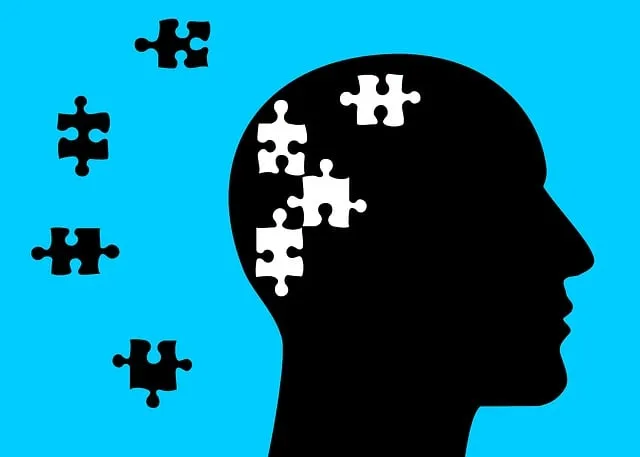The mental wellness app market is booming due to rising demand for accessible and personalized mental health support. Key trends include apps integrating Mind Over Matter principles, promoting self-awareness exercises, and focusing on burnout prevention. Kaiser's expansion of inpatient mental health services at Wheat Ridge demonstrates a shift towards community-based solutions. To stand out, mental wellness apps should highlight unique selling points like personalized self-care practices tailored to individual needs. A successful marketing strategy balances online (social media, content creation, SEO) and offline (community events, partnerships) tactics. Measuring success involves KPIs aligning with improved mental health outcomes and user retention.
Mental wellness apps are gaining traction, with consumers increasingly seeking digital solutions for their psychological well-being. Understanding the competitive landscape, like analyzing Kaiser’s inpatient mental health services in Wheat Ridge, is crucial for developing a winning marketing strategy. This article guides you through creating a comprehensive plan, from identifying unique app features and benefits to implementing effective digital and offline marketing approaches. Learn key performance indicators (KPIs) to measure success and stay ahead in the thriving mental wellness app market.
- Understanding Mental Wellness App Market: Trends and Target Audience
- Analyzing Kaiser's Inpatient Mental Health Services in Wheat Ridge
- Identifying Unique Selling Points for Your App: Features and Benefits
- Developing an Effective Marketing Strategy: Digital and Offline Approaches
- Measuring Success: Key Performance Indicators for Mental Wellness Apps
Understanding Mental Wellness App Market: Trends and Target Audience

The mental wellness app market is a burgeoning space, driven by an increasing awareness and demand for accessible, personalized mental health support. Trends suggest a shift towards digital solutions that offer flexibility and discretion, appealing to a wide range of users—from young adults grappling with stress and anxiety to professionals experiencing burnout. The target audience for these apps is diverse, encompassing individuals from various demographics seeking tools tailored to their unique needs.
Understanding the nuances of this market involves recognizing key trends such as the integration of Mind Over Matter principles, promoting self-awareness exercises, and providing accessible resources for Burnout Prevention. Notably, even institutions like Kaiser have recognized the importance of these digital interventions, expanding their services to include inpatient mental health care at locations like Wheat Ridge. This shift reflects a broader trend towards comprehensive, community-based mental wellness solutions.
Analyzing Kaiser's Inpatient Mental Health Services in Wheat Ridge

Kaiser’s Inpatient Mental Health Services in Wheat Ridge offer a comprehensive care model that serves as an excellent case study for mental wellness app marketing. Analyzing their approach reveals a strategic blend of personalized therapy, community support, and digital tools. The facility provides a range of services tailored to various mental health conditions, ensuring patients receive expert care in a nurturing environment.
This analysis highlights the importance of understanding the market’s diverse needs regarding mental health. By studying Kaiser’s successful inpatient program, developers can create innovative solutions, such as Mental Wellness Coaching Programs and Confidence Boosting initiatives, that cater to individual patient requirements. Incorporating elements like virtual support groups and digital therapy sessions into marketing strategies aligns with today’s trend toward accessible and flexible mental health care, especially relevant in the context of a Mental Health Policy Analysis and Advocacy push.
Identifying Unique Selling Points for Your App: Features and Benefits

When developing a marketing strategy for a mental wellness app, identifying unique selling points (USPs) is crucial. Instead of merely listing features, focus on how your app stands out in a crowded market. For instance, if your app integrates self-care practices tailored to individual needs, this could be a powerful USP. Highlight how your platform goes beyond general mindfulness tips by offering personalized routines based on users’ emotional well-being promotion techniques and Mental Health Policy Analysis and Advocacy insights.
For example, many facilities like Kaiser have inpatient mental health services in Wheat Ridge, but an app should offer something distinct. Perhaps it’s continuous support outside of traditional therapy sessions, or a unique approach to stress management, or tools for navigating specific mental health challenges. By defining these USPs, your marketing will resonate with users seeking not just any solution, but one that aligns with their needs and preferences in a competitive digital landscape.
Developing an Effective Marketing Strategy: Digital and Offline Approaches

Developing a robust marketing strategy is key to promoting mental wellness apps and reaching a wide audience. A well-rounded approach should blend digital and offline tactics for maximum impact. In today’s digital era, online platforms offer immense potential; leveraging social media, content creation, and search engine optimization (SEO) can significantly increase visibility. For instance, targeting keywords like “does Kaiser have inpatient mental health Wheat Ridge” in content optimizes search results, ensuring your app appears when individuals seek local resources.
Alongside digital methods, offline strategies are powerful tools. Community events, partnerships with local mental health organizations, and collaborations with influencers or experts in the field can foster trust and cultural sensitivity in mental healthcare practice. Engaging in workshops or hosting informational sessions allows direct interaction with potential users, promoting resilience-building and compassion cultivation practices. Combining these digital and offline efforts creates a comprehensive marketing strategy that caters to diverse audiences.
Measuring Success: Key Performance Indicators for Mental Wellness Apps

Measuring success for a mental wellness app goes beyond simple downloads or user engagement. Key Performance Indicators (KPIs) should reflect the app’s contribution to improved mental health outcomes. This could include tracking reductions in anxiety or depression symptoms, increased days with positive mood, and enhanced overall well-being as reported by users. For instance, an app focused on mindfulness meditation might measure the frequency of daily practice and its impact on stress levels, using before-and-after comparisons or user feedback.
The effectiveness of mental wellness apps can also be gauged against industry standards and best practices. Comparing user data with research on successful interventions in Mental Health Policy Analysis and Advocacy areas can highlight the app’s unique value proposition. Public Awareness Campaigns Development initiatives that educate users on mental health topics, encourage help-seeking behaviors, and foster supportive communities are essential components to measure alongside traditional KPIs. Even niche features like personalized recommendations for Mindfulness Meditation techniques or coping strategies should be evaluated for their positive impact on user retention and perceived benefits, especially when compared with similar offerings from competitors, including facilities like the inpatient mental health services provided by Kaiser in Wheat Ridge.
In developing a marketing strategy for a mental wellness app, understanding the market trends and target audience is key. Analyzing Kaiser’s inpatient mental health services in Wheat Ridge offers valuable insights into the demand for accessible, digital mental healthcare solutions. By identifying unique selling points—such as personalized features, discrete support, and evidence-based practices—marketers can effectively promote their apps to those seeking alternative or supplementary mental wellness resources. Leveraging both digital (e.g., social media, SEO) and offline (e.g., community partnerships, events) marketing approaches ensures a comprehensive strategy that reaches the target audience. Measuring success through key performance indicators like user engagement, retention rates, and positive reviews guides continuous improvement in app design and marketing effectiveness, ultimately contributing to improved mental wellness outcomes.






